lol
AI age
Artificial intelligence (AI) is the simulation of human intelligence processes by machines, especially computer systems. These processes include learning (the acquisition of information and rules for using the information),
mercredi 25 mars 2020
vendredi 26 juillet 2019
AI (artificial intelligence)
Because hardware, software and staffing costs for AI can be expensive, many vendors are including AI components in their standard offerings, as well as access to Artificial Intelligence as a Service (AIaaS) platforms. AI as a Service allows individuals and companies to experiment with AI for various business purposes and sample multiple platforms before making a commitment. Popular AI cloud offerings include Amazon AI services, IBM Watson Assistant, Microsoft Cognitive Services and Google AI services.
While AI tools present a range of new functionality for businesses ,the use of artificial intelligence raises ethical questions. This is because deep learning algorithms, which underpin many of the most advanced AI tools, are only as smart as the data they are given in training. Because a human selects what data should be used for training an AI program, the potential for human bias is inherent and must be monitored closely.
Some industry experts believe that the term artificial intelligence is too closely linked to popular culture, causing the general public to have unrealistic fears about artificial intelligence and improbable expectations about how it will change the workplace and life in general. Researchers and marketers hope the label augmented intelligence, which has a more neutral connotation, will help people understand that AI will simply improve products and services, not replace the humans that use them.
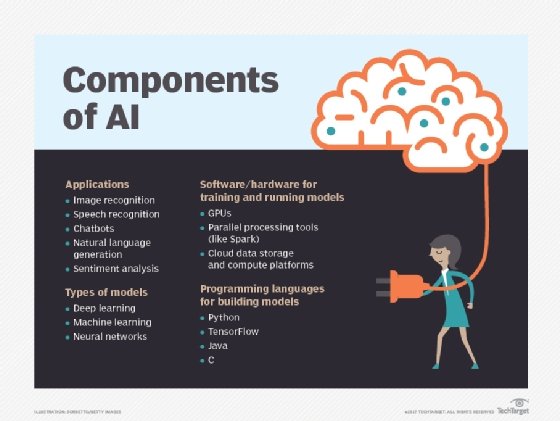
Types of artificial intelligence
Arend Hintze, an assistant professor of integrative biology and computer science and engineering at Michigan State University, categorizes AI into four types, from the kind of AI systems that exist today to sentient systems, which do not yet exist. His categories are as follows:- Type 1: Reactive machines. An example is Deep Blue, the IBM chess program that beat Garry Kasparov in the 1990s. Deep Blue can identify pieces on the chess board and make predictions, but it has no memory and cannot use past experiences to inform future ones. It analyzes possible moves -- its own and its opponent -- and chooses the most strategic move. Deep Blue and Google's AlphaGO were designed for narrow purposes and cannot easily be applied to another situation.
- Type 2: Limited memory. These AI systems can use past experiences to inform future decisions. Some of the decision-making functions in self-driving cars are designed this way. Observations inform actions happening in the not-so-distant future, such as a car changing lanes. These observations are not stored permanently.
- Type 3: Theory of mind. This psychology term refers to the understanding that others have their own beliefs, desires and intentions that impact the decisions they make. This kind of AI does not yet exist.
- Type 4: Self-awareness. In this category, AI systems have a sense of self, have consciousness. Machines with self-awareness understand their current state and can use the information to infer what others are feeling. This type of AI does not yet exist .
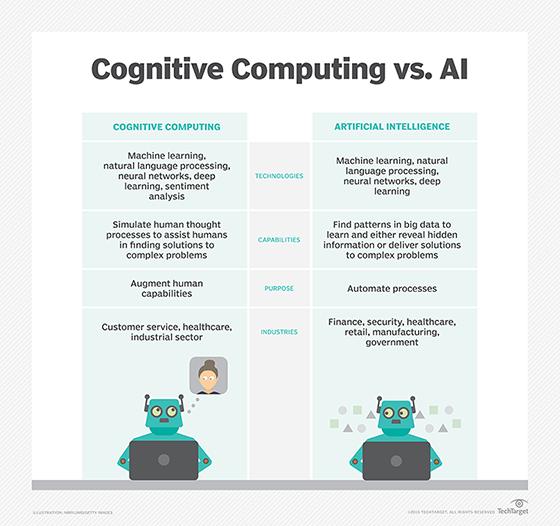
Examples of AI technology
AI is incorporated into a variety of different types of technology. Here are seven examples.- Automation: What makes a system or process function automatically. For example, robotic process automation (RPA) can be programmed to perform high-volume, repeatable tasks that humans normally performed. RPA is different from IT automation in that it can adapt to changing circumstances.
- Machine learning: The science of getting a computer to act without programming
.
Deep
learning is a subset of machine learning that, in very
simple terms, can be thought of as the automation of predictive
analytics. There are three types of machine learning algorithms:
- Supervised learning: Data sets are labeled so that patterns can be detected and used to label new data sets
- Unsupervised learning: Data sets aren't labeled and are sorted according to similarities or differences
- Reinforcement learning: Data sets aren't labeled but, after performing an action or several actions, the AI system is given feedback
- Machine vision: The science of allowing computers to see. This technology captures and analyzes visual information using a camera, analog-to-digital conversion and digital signal processing. It is often compared to human eyesight, but machine vision isn't bound by biology and can be programmed to see through walls, for example. It is used in a range of applications from signature identification to medical image analysis. Computer vision, which is focused on machine-based image processing, is often conflated with machine vision.
- Natural language processing (NLP): The processing of human -- and not computer -- language by a computer program. One of the older and best known examples of NLP is spam detection, which looks at the subject line and the text of an email and decides if it's junk. Current approaches to NLP are based on machine learning. NLP tasks include text translation, sentiment analysis and speech recognition.
- Robotics: A field of engineering focused on the design and manufacturing of robots. Robots are often used to perform tasks that are difficult for humans to perform or perform consistently. They are used in assembly lines for car production or by NASA to move large objects in space. Researchers are also using machine learning to build robots that can interact in social settings.
- Self-driving cars: These use a combination of computer vision, image recognition and deep learning to build automated skill at piloting a vehicle while staying in a given lane and avoiding unexpected obstructions, such as pedestrians.
AI applications
Artificial intelligence has made its way into a number of areas. Here are six examples.- AI in healthcare. The biggest bets are on improving patient outcomes and reducing costs. Companies are applying machine learning to make better and faster diagnoses than humans. One of the best known healthcare technologies is IBM Watson. It understands natural language and is capable of responding to questions asked of it. The system mines patient data and other available data sources to form a hypothesis, which it then presents with a confidence scoring schema. Other AI applications include chatbots, a computer program used online to answer questions and assist customers, to help schedule follow-up appointments or aid patients through the billing process, and virtual health assistants that provide basic medical feedback.
- AI in business. Robotic process automation is being applied to highly repetitive tasks normally performed by humans. Machine learning algorithms are being integrated into analytics and CRM platforms to uncover information on how to better serve customers. Chatbots have been incorporated into websites to provide immediate service to customers. Automation of job positions has also become a talking point among academics and IT analysts.
- AI in education. AI can automate grading, giving educators more time. AI can assess students and adapt to their needs, helping them work at their own pace. AI tutors can provide additional support to students, ensuring they stay on track. AI could change where and how students learn, perhaps even replacing some teachers.
- AI in finance. AI in personal finance applications, such as Mint or Turbo Tax, is disrupting financial institutions. Applications such as these collect personal data and provide financial advice. Other programs, such as IBM Watson, have been applied to the process of buying a home. Today, software performs much of the trading on Wall Street.
- AI in law. The discovery process, sifting through of documents, in law is often overwhelming for humans. Automating this process is a more efficient use of time. Startups are also building question-and-answer computer assistants that can sift programmed-to-answer questions by examining the taxonomy and ontology associated with a database.
- AI in manufacturing. This is an area that has been at the forefront of incorporating robots into the workflow. Industrial robots used to perform single tasks and were separated from human workers, but as the technology advanced that changed .
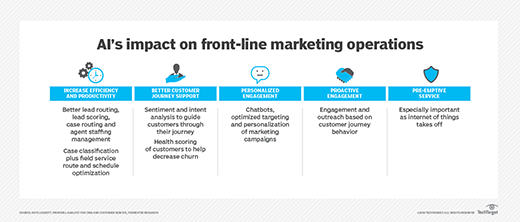
Security and ethical concerns
The application of AI in the realm of self-driving cars raises security as well as ethical concerns. Cars can be hacked, and when an autonomous vehicle is involved in an accident, liability is unclear. Autonomous vehicles may also be put in a position where an accident is unavoidable, forcing the programming to make an ethical decision about how to minimize damage.Another major concern is the potential for abuse of AI tools. Hackers are starting to use sophisticated machine learning tools to gain access to sensitive systems, complicating the issue of security beyond its current state.
Deep learning-based video and audio generation tools also present bad actors with the tools necessary to create so-called deepfakes , convincingly fabricated videos of public figures saying or doing things that never took place .
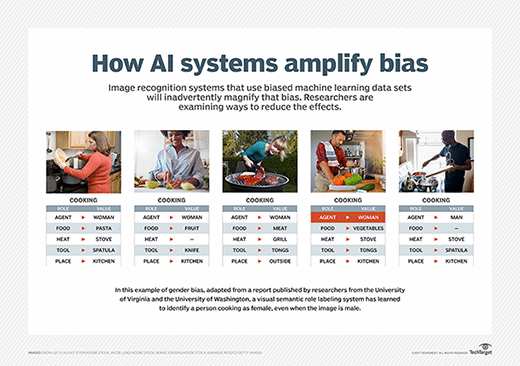
Regulation of AI technology
Despite these potential risks, there are few regulations governing the use AI tools, and where laws do exist, the typically pertain to AI only indirectly. For example, federal Fair Lending regulations require financial institutions to explain credit decisions to potential customers, which limit the extent to which lenders can use deep learning algorithms, which by their nature are typically opaque. Europe's GDPR puts strict limits on how enterprises can use consumer data, which impedes the training and functionality of many consumer-facing AI applications.In 2016, the National Science and Technology Council issued a report examining the potential role governmental regulation might play in AI development, but it did not recommend specific legislation be considered. Since that time the issue has received little attention from lawmakers.
Valuing the Artificial Intelligence Market, Graphs and Predictions
Valuing the Artificial Intelligence Market, Graphs and Predictions
 Wall
Street, venture capitalists, technology executives – all have important
reasons to understand the growth and opportunity in the artificial
intelligence market, but the inherent vagueness of the term makes any
single valuation extremely difficult. Indeed, the term “artificial
intelligence” is notorious for having a relatively amorphous definition.
Wall
Street, venture capitalists, technology executives – all have important
reasons to understand the growth and opportunity in the artificial
intelligence market, but the inherent vagueness of the term makes any
single valuation extremely difficult. Indeed, the term “artificial
intelligence” is notorious for having a relatively amorphous definition.In order to put together an executive brief for market size and projected growth of AI, I’ve molded this article around (a) AI-related industry market research forecasts, and (b) a limited number of reputable research sources for further insight into AI valuation and forecasting, in addition to select and relevant quotes.
Bear in mind that different market research firms define “artificial intelligence” according to varying criteria. To make this summary article more useful, we’ve quickly broken down all reports by source, definition / meaning of “artificial intelligence”, valuation, and timeline.
The goal of this article is do provide a short consensus on well-researched projections of AI’s growth and market value in the coming decade, and to (as always) provide amble references for further exploration for those of you who aim to go deeper. We’ve aimed to stick to sources whose reputation rests on their objectivity, rather than on excited statements of companies whose incentive is to see the future their way (such as IBM’s CEO claiming a potential $2 trillion dollar market for “cognitive computing”).
Artificial Intelligence Market Forecasts and Valuations
(The following profiles and forecasts are updated on a quarterly basis)- Source: Forrester Research
- Definition: “Cognitive computing technologies”
- Forecast Timeline: 2020
- Market Value Projected: $1.2 tn (Global GDP annual growth rate of 3.5%)
In 2017, these technologies will increase businesses’ access to data, broaden the types of data that can be analyzed, and raise the level of sophistication of the resulting insight. In the year ahead, we expect that:
1) Investment in AI will triple
2) Big data will become the big friend of CI pros
3) Digital analytics vendors will aggressively build out IoT capabilities

The vast majority of firms believe that having an organizational model that supports analytics is critical to breaking down the silos of customer knowledge that exist throughout the enterprise…Enterprises are starting to show signs of elevating the priority of, and investment in, initiatives to get rid of existing silos. In 2017, we expect these efforts to become major initiatives:
1) Chief data officers (CDOs) will come of age…
2) Customer data management projects will increase by 75%…
3) Leading CI practices will be the poster child for business transformation
- Source: Tractica Research
- Definition: “Tractica defines AI as an information system that is inspired by a biological system designed to give computers the human-like abilities of hearing, seeing, reasoning, and learning. AI has applications and use cases in almost every industry vertical and is considered the next big technological shift.”
- Forecast Timeline: 2025
- Market Value Projected: $36.8 bn
Tractica forecasts that the revenue generated from the direct and indirect application of AI software is estimated to grow from $643.7 million in 2016 to $36.8 billion by 2025. This represents a significant growth curve for the 9-year period with a compound annual growth rate (CAGR) of 56.8%.The chart below shows Tractica’s top 10 AI use cases in terms of revenue in 2025:
andTractica has assumed a somewhat conservative adoption of AI in the hedge fund and investment community, with an assumption that roughly 50% of the hedge fund assets traded by 2025 will be AI-driven. Even with the conservative estimate, the algorithmic trading use case remains the top use case among the 191 use cases identified by Tractica.
Out of the top 10 use cases, 60% of the use cases are related to big data and 40% are related to image or object recognition, which is a good high-level characterization of how the market is expected to shape up.
- Source: Aman Naimat, Founder of Spiderbook (in collaboration with O’Reilly)
- Definition: “Technologies available that are achieving human- or super-human-level intelligence on a given human task (aka “narrow intelligence”)”; however, Naimat also notes that “it is not the purpose of this report to argue what Artificial Intelligence is or is not’. Rather, I take a practical approach to the definition of AI and present an analysis based on self-identified businesses that claim to be using or building AI.”
- *Forecast Timeline: Less a forecast than a *data-based analysis of companies currently investing in AI-based technologies, which sheds a light on present-day trends and provides an informed jumping off point for projected forecasts.
- Market Analysis (Top 3 highest number of use cases by percentage of resources spent):
- Cyber intelligence (22%)
- Healthcare (10%)
- Manufacturing automation (8%)
There are only 1,500 companies in North America that are doing anything related to AI today, even using its narrow, task-based definition. That means less than one percent of all medium-to-large companies across all industries are adopting AI.and
A breakdown of AI adoption does not provide a fair picture of the current level of AI maturity in the market. The following two figures detail how many companies are using these AI technologies beyond lab experiments (i.e., those developing applications based on it or deploying it across the company).Spiderbook’s current data visualization of companies investing in AI:
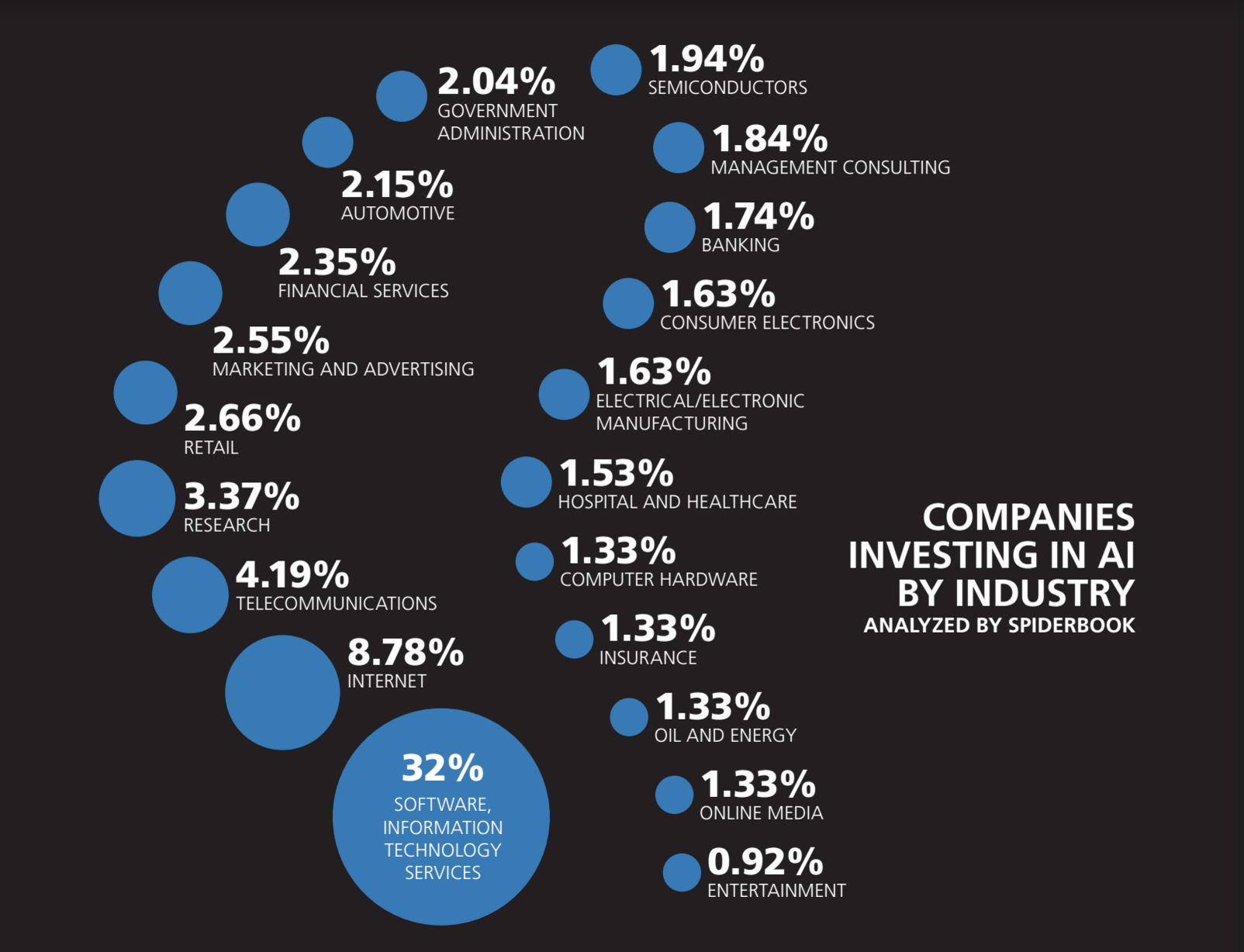
- Source: Accenture
- Definition: Artificial Intelligence (AI) refers to IT systems that sense, comprehend, act and learn.
- Forecast Timeline: 2035
- Market Value Projected: $8.3 tn (U.S. only – compared to $814 bn in UK, $2.1 tn in Japan, and $1.1 tn in Germany, all measured in GVA i.e. gross value added)
Select quotes:
While the gains vary from country to country, our results are indicative of AI’s ability to transcend regional and structural disparities, enabling huge, rapid leaps in labor productivity.and
To fulfill the promise of AI as a new factor of production that can reignite economic growth, relevant stakeholders must be thoroughly prepared—intellectually, technologically, politically, ethically, socially—to address the challenges that arise as artificial intelligence becomes more integrated in our lives. The starting point is understanding the complexity of the issues.Accenture’s stacked column chart of GVA growth for 12 selected countries with AI as factor in production:

- Source: Bank of America Merrill Lynch (as covered in FT.com)
- Definition: Vaguely defined in FT’s report brief as “artificial intelligence-based systems”
- Forecast Timeline: 2020
- Market Value Projected: $70 bn
BofA Merrill reckons the market will blossom to $153bn over the next five years — $83bn for robots, and $70bn for artificial intelligence-based systems. That compares to roughly $58bn in 2014, according to a calculation by Beijia Ma, one of the report’s authors…and
Demand is expected to be driven by an ageing global population and a rise in wages of workers in emerging markets. Wage growth among China’s factory workers, for example, has surged nine-fold since 2000.BofA’s graphic representation of 12 areas of AI and robotics application, as featured on FT:
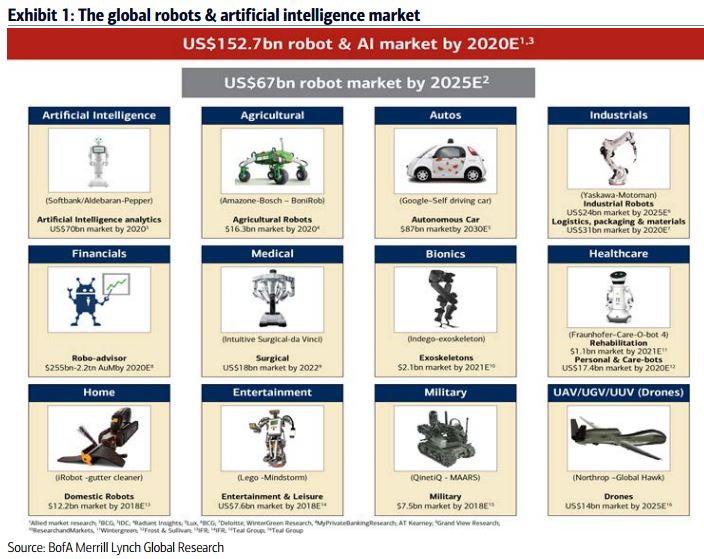
- Source: BCC Research, as presented in a lengthly article on Siemens website
- Definition: Broadly defined as “smart machines”, includes:
- Virtual reality assistants (e.g., Siri)
- Intelligent agents (e.g., automated online assistants)
- Expert systems (e.g., medical decision support systems, smart grid)
- Embedded software (machine monitoring and control systems)
- Autonomous robots (including self-driving vehicles)
- Purpose-built smart machines (such as neural computers)
- Forecast Timeline: 2024
- Market Value Projected: $41.22 bn
The global market for smart machines was valued at $5.3 billion in 2013. This market is expected to increase to over $6.2 billion in 2014 and nearly $15.3 billion in 2019, a compound annual growth rate (CAGR) of 19.7% for the five-year period 2014 to 2019…and
Expert systems (e.g. medical decision support systems and smart grids) made up the largest share of the market in 2013, followed by autonomous robots. BCC Research expects the autonomous robot category to account for the largest share — 22.8 percent — of annual market growth until 2024 and thus to dominate the smart machine market.Below is the graphic displayed on Siemens blog:
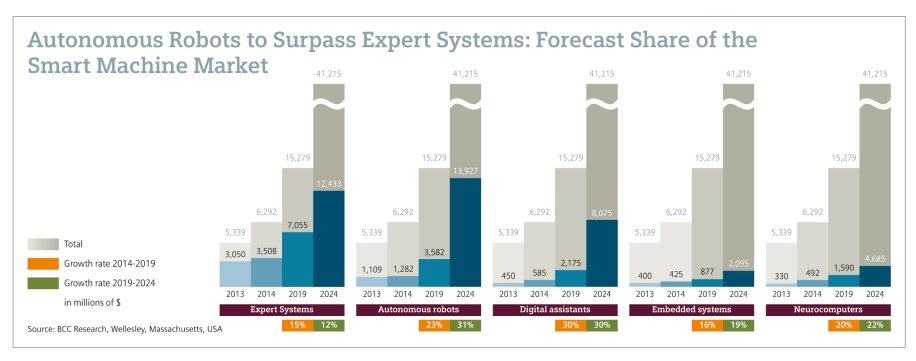
- Source: GII Research (based in Japan), as listed on one of their own report briefs
- Definition: Broadly defined, seems to refer to the entire application area of AI “by Technology (Machine Learning, Natural Language Processing, Image Processing, and Speech Recognition), Application (Advertising & Media, Finance, Retail)”
- Forecast Timeline: 2020
- Market Value Projected: $5.05 bn
The artificial intelligence market is estimated to grow from USD 419.7 million in 2014 to USD 5.05 billion by 2020, at a CAGR of 53.65% from 2015 to 2020. This growth can be attributed to the factors such as diversified application areas, improved productivity, and increased customer satisfaction.
- Source: Tractica Research
- Definition: Broadly defined in the report as follows, “The technologies covered include cognitive computing, deep learning, machine learning, predictive APIs, natural language processing, image recognition, and speech recognition”
- Forecast Timeline: 2024
- Market Value Projected: $11.1 bn
According to a new report from Tractica, the market for enterprise AI systems will increase from $202.5 million in 2015 to $11.1 billion by 2024.The graphic below is found in the aforementioned research brief:
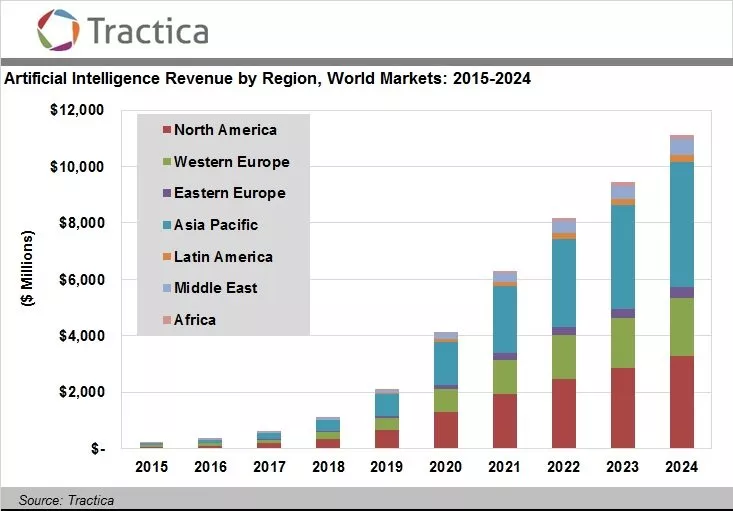
Related Market Forecasts and Valuations (Big Data and Predictive Analytics)
- Source: Wikibon research as covered by KDNuggets.com
- Definition: Big Data-related hardware, software and professional services
- Forecast Timeline: 2020
- Market Value Projected: $61.16 bn
Select quotes:
For the calendar year 2014, the Big Data market – as measured by revenue associated with the sale of Big Data-related hardware, software and professional services – reached $27.36 billion, up from $19.6 billion in 2013. While growing significantly faster than other enterprise IT markets, the Big Data market’s overall growth rate slowed year-over-year from 60% in 2013 to 40% in 2014.and
Wikibon expects the Big Data market to top $61 billion in 2020, a 26% compound annual growth rate for 2011-2020. After initial intense growth, Big Data market growth will slow considerably. This growth pattern is common to disruptive technology markets as they mature.Big data graphic as displayed on the KDN blog:
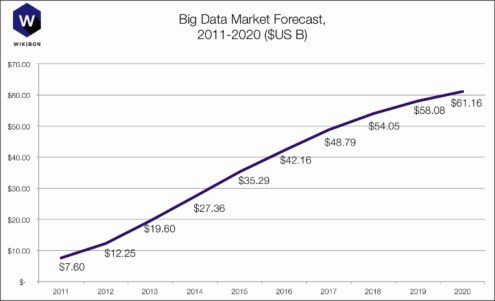
- Source: A.T. Kearney, as reported from DealFlow.com’s blog
- Definition: “Software, hardware and services” for big data
- (NOTE: This report is based on the related domain of “big data”, and wasn’t created explicitly to size the “artificial intelligence” field)
- Forecast Timeline: 2018
- Market Value Projected: $114 bn
According to a report from A.T. Kearney, the overall big data spend could grow at a 30% CAGR through 2018. The size of this market, inclusive of software, hardware and services, is projected to reach $114 billion in 2018. “The average business expects to spend $8 million on big data-related initiatives this year,” according to the Kearney report, which also says each IT job created in the process of upgrading will create three additional jobs outside IT.
- Source: Markets and Markets Research
- Definition: “Risk management, sales and marketing management, operations management, workforce management, network management, supply chain management, and other applications” for predictive analytics
- Forecast Timeline: 2020
- Market Value Projected: $9.2 bn
Select quotes:
…the global predictive analytics market to grow from USD 2.74 Billion in 2015 to USD 9.20 Billion by 2020, at a Compound Annual Growth Rate (CAGR) of 27.4% during the forecast period. The predictive analytics market is growing rapidly because of the transformation from traditional Business Intelligence (BI) techniques to advanced analytics techniques and massive surge of structured and unstructured data.
Additional AI Forecasting and Trend Resources
- Forbes, 2015 big data trends and predictions
The big data and analytics market will reach $125 billion worldwide in 2015, according to IDC. Both IDC and The International Institute of Analytics (IIA) discussed their big data and analytics predictions for 2015 in separate webcasts yesterday.
- Forbes, 2016 big data trends and predictions
IIA predicts that automated data curation and management will free up analysts and data scientists to do more of the work they want to do. Forrester says that in 2016, machine learning will begin to replace manual data wrangling and data governance dirty work, and vendors will market these solutions as a way to make data ingestion, preparation, and discovery quicker. Through 2020, according to IDC, spending on self-service visual discovery and data preparation tools will grow 2.5x faster than traditional IT-controlled tools for similar functionality.
- IDC, worldwide big data and analytics predictions, 2016
Prediction 2: By 2020, 50% of All Business Analytics Software Will Incorporate Prescriptive Analytics Built On Cognitive Computing Functionality…
Prediction 6: Through 2020, Spending on Self-Service Visual Discovery and Data Preparation Market Will Grow 2.5x Faster Than Traditional IT-Controlled Tools for Similar Functionality…
Prediction 10: Organizations That Analyze All Relevant Data and Deliver Actionable Information Will Achieve Extra $430 Billion in Productivity Gains Over Their Less Analytically Oriented Peers by 2020
- Markets and Markets Research via PR Newswire, cognitive computing 2014-2019
MarketsandMarkets.com forecasts the Cognitive Computing Market to grow from $2,510.4 Million in 2014 to$12,550.2 Million by 2019. This represents a Compound Annual Growth Rate (CAGR) of 38.0% from 2014 to 2019.
- Gartner Identifies the Top 10 Strategic Technology Trends for 2016
Advanced Machine Learning
In advanced machine learning, deep neural nets (DNNs) move beyond classic computing and information management to create systems that can autonomously learn to perceive the world, on their own.
Autonomous Agents and Things
Machine learning gives rise to a spectrum of smart machine implementations — including robots, autonomous vehicles, virtual personal assistants (VPAs) and smart advisors — that act in an autonomous (or at least semiautonomous) manner.
- Gartner Reveals Top Predictions for IT Organizations and Users for 2016 and Beyond
1) By 2018, 20 percent of business content will be authored by machines. Technologies with the ability to proactively assemble and deliver information through automated composition engines are fostering a movement from human- to machine-generated business content…2) By 2018, six billion connected things will be requesting support. In the era of digital business, when physical and digital lines are increasingly blurred, enterprises will need to begin viewing things as customers of services — and to treat them accordingly…3) By 2020, autonomous software agents outside of human control will participate in five percent of all economic transactions. Algorithmically driven agents are already participating in our economy. However, while these agents are automated, they are not fully autonomous, because they are directly tethered to a robust collection of mechanisms controlled by humans — in the domains of our corporate, legal, economic and fiduciary systems…4) By 2018, more than 3 million workers globally will be supervised by a “robo-boss.” Robo-bosses will increasingly make decisions that previously could only have been made by human managers…
5) By year-end 2018, 20 percent of smart buildings will have suffered from digital vandalism. Inadequate perimeter security will increasingly result in smart buildings being vulnerable to attack..
6) By 2018, 45 percent of the fastest-growing companies will have fewer employees than instances of smart machines. Gartner believes the initial group of companies that will leverage smart machine technologies most rapidly and effectively will be startups and other newer companies…
Conclusion
Prognostication – no matter how well informed – is risky business, especially in a field rife with buzzwords and sparse in concrete definitions. What fraction of spending on “big data” will imply the use of machine learning or other AI applications? What portion of “predictive analytics” inherently implies training AI algorithms, as opposed to merely permitting clearer forecasting and visualization? It’s hard to tell.Nonetheless, we’re of the belief that varied perspective is useful, and this summary article was intended to do jus that.
If any conclusion can be drawn, it’s likely to be the fact that the terms and applications that define the “artificial intelligence” field are grey, and that definitions must be taken on a case-by-case basis.
We might imagine that like other nascent technology fields, artificial intelligence will mature to the point of having a more robust and clear vendor ecosystem, and more defined terms to delineate between applications and uses. There are likely to be leaps and bounds in the next decade in gleaning insights from “unstructured data”, while applying predictive analytics and building business models is a more oft-used approach to implementing machine learning and data mining technologies at present.
For now, if an executive or investor has interest in a particular domain or use of artificial intelligence, the first step in determining valuation and forecast would be to draw a proverbial “dotted line” around what “artificial intelligence” means for your purposes, and to draw the varied sources to get a mosaic of where things stand in your niche.
For further exploration of the science and applications of machine learning, consider listening to some of our recent AI researcher interviews.
[This article has been updated as of February 28, 2017 to reflect new research and industry progress in the artificial intelligence market.]
Image credits: s456.photobucket.com/
Artificial Intelligence Market | AI Market Size | Forecast to 2025
Artificial Intelligence Market | AI Market Size | Forecast to 2025
According to the new market research report "Artificial Intelligence Market by Offering (Hardware, Software, Services), Technology (Machine Learning, Natural Language Processing, Context-Aware Computing, Computer Vision), End-User Industry, and Geography - Global Forecast to 2025", The artificial intelligence market is expected to be valued at USD 21.5 billion in 2018 and is likely to reach USD 190.6 billion by 2025, at a CAGR of 36.6% during the forecast period. Major drivers for the market are growing big data, the increasing adoption of cloud-based applications and services, and an increase in demand for intelligent virtual assistants. The major restraint for the market is the limited number of AI technology experts. Critical challenges facing the AI market include concerns regarding data privacy and the unreliability of AI algorithms. Underlying opportunities in the artificial intelligence market include improving operational efficiency in the manufacturing industry and the adoption of AI to improve customer service.
Browse 68 tables and 52 figures spread through 222 pages and in-depth TOC on "Artificial Intelligence Market - Global Forecast to 2025" https://www.marketsandmarkets.com/Market-Reports/artificial-intelligence-market-74851580.html

Artificial Intelligence Market Deep learning is expected to grow at the highest CAGR during the forecast period The increasing use of deep learning in applications such as image recognition, speech recognition, and data mining is the prime factor resulting in its growth. In addition, the rising adoption of deep learning algorithms to derive vital information generated from wearables and electronic health record (EHR) systems and its use in drug discovery application are the key factors driving the market growth. Software market for artificial intelligence expected to hold the largest market share The software market is expected to hold the largest share for artificial intelligence market. The software market is growing due to increasing conversation AI platforms.
Also, The general purpose AI platforms and software being used to develop interface and application ranging from conversational interfaces to predictive and prescriptive applications that offer advice and recommendations. The AI software platform is majorly focused on tools and API framework for application and technologies based on AI and ML using both structured and unstructured data to drive these application. Manufacturing end-user industry is expected to grow at the highest CAGR during the forecast period The manufacturing industry is witnessing a new wave of technological revolution, which is boosting the idea for implementation of artificial intelligence (AI) in the plant. AI-based solutions are adopted in manufacturing facilities to improve the productivity by maximizing asset utilization, minimizing downtime, and improving machine efficiency.
Moreover, AI in manufacturing is expected to enhance productivity through quality control by detecting defects and help in the predictive maintenance of factory machinery. This factor is expected to drive the growth of the AI market in manufacturing. Deep learning, natural language processing, context awareness, and computer vision are the major technologies used for data mining, image analysis, signal analysis, decision-making, and execution. North America expected to hold the largest market share, APAC to witness the highest growth rate North America is expected to hold the largest share and dominate the artificial intelligence market between 2018 and 2025. Rapid developments in infrastructure and the high adoption of digital technologies are the 2 major drivers of the AI market in the region. Additionally, the region, a well-established economy, has also seen large-scale investments in AI, as a result of which, both start-ups and well-established companies are concentrating more on developing innovative AI-enabled solutions to cater to the various industry verticals. Moreover, the smart city initiatives are increasing in the North American region, due to which, there is an increase in the raw data as well. The need to analyze such raw data to extract relevant information has increased the demand for various AI platforms, such as Google cloud prediction API, Microsoft Azure ML, and Amazon’s AWS in this region. The artificial intelligence market in Asia Pacific (APAC) is expected to grow at the highest CAGR during the forecast period. In security, with increasing incidents of cyberattacks and a growing cyber-war in the region, organizations and governments are focusing on robust defense infrastructure. APAC, especially China, Japan, and South Korea, is considered the largest market for industrial robots. Industrial robots generate a huge volume of data, which is used for training robots. This would act as one of the major drivers for the AI market in APAC. The major players in this market include Intel (US), NVIDIA (US), Xilinx (US), Samsung (South Korea), Facebook (US), Micron(US), IBM (US), Google (US), Microsoft (US), and AWS (US). Don’t miss out on business opportunities in Artificial Intelligence Market. Speak to our analyst and gain crucial industry insights that will help your business grow. About MarketsandMarkets™ MarketsandMarkets™ provides quantified B2B research on 30,000 high growth niche opportunities/threats which will impact 70% to 80% of worldwide companies’ revenues. Currently servicing 7500 customers worldwide including 80% of global Fortune 1000 companies as clients. Almost 75,000 top officers across eight industries worldwide approach MarketsandMarkets™ for their painpoints around revenues decisions. Our 850 fulltime analyst and SMEs at MarketsandMarkets™ are tracking global high growth markets following the "Growth Engagement Model – GEM". The GEM aims at proactive collaboration with the clients to identify new opportunities, identify most important customers, write "Attack, avoid and defend" strategies, identify sources of incremental revenues for both the company and its competitors. MarketsandMarkets™ now coming up with 1,500 MicroQuadrants (Positioning top players across leaders, emerging companies, innovators, strategic players) annually in high growth emerging segments. MarketsandMarkets™ is determined to benefit more than 10,000 companies this year for their revenue planning and help them take their innovations/disruptions early to the market by providing them research ahead of the curve. MarketsandMarkets’s flagship competitive intelligence and market research platform, "Knowledgestore" connects over 200,000 markets and entire value chains for deeper understanding of the unmet insights along with market sizing and forecasts of niche markets.
Inscription à :
Commentaires (Atom)